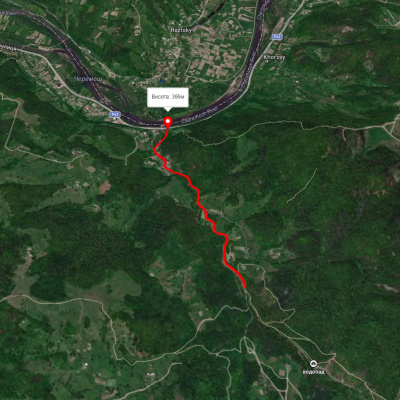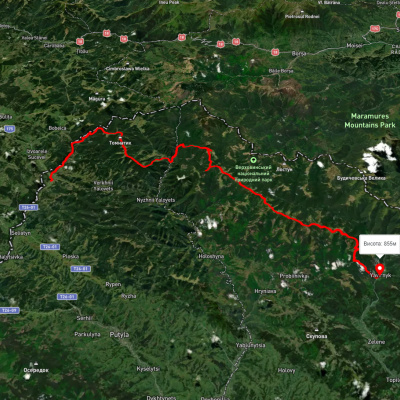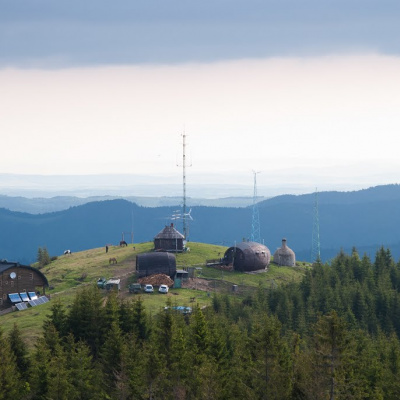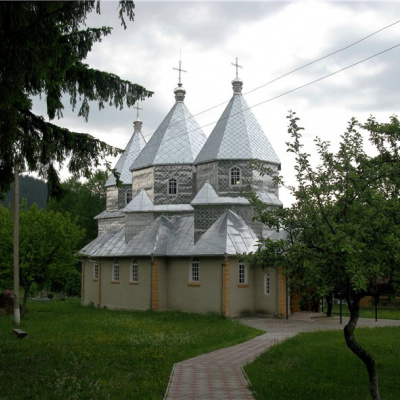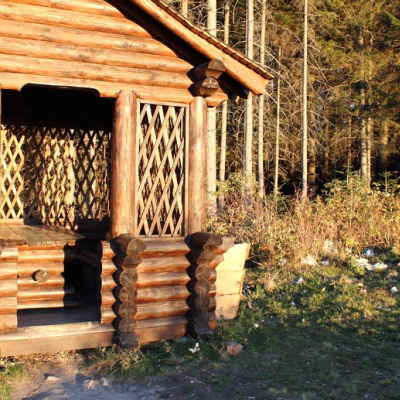Fate's Whisper
The village of Dolishniy Shepit in the Vyzhnytsia district belongs to the Dolishnioshepit village council of the Chernivtsi region. The first mention of the settlement dates back to 1490, when the surrounding lands were the property of the Putnyansky Monastery. The name, they say, comes from the first resident who ran away from his lord and hid near the local river, listening to the hiss of the water. Over time, the man took his wife and children here, and then other fugitives from the lord's oppression began to settle here. The settlement was named Shypot, later Shepit, and now Dolishnii Shepit.
The village of Dolishnii Shepit is located in the valley of the Siret River. It is surrounded by mountains on all sides. It is protected from the east winds by the Tomnatyk and Lysnychka mountains. Magura and Pleshcha rise to the south. In the west, the Fruntia rises. In the north, the valley is closed by Mount Mocharka. The mountains are crowned with centuries-old beeches, evergreen spruce and fir trees. This mountainous area was uninhabited for a long time. The population of Dolishnii Shepit village exceeds 1300 people.
Theold church of Dolishnii Shepot was built in 1891, the church burned down in 1975. In 1991, a wooden church of St. Elijah was built in the village, where a part of the relics of St. Panteleimon has been kept since 2010.
In the 15th century, feudal oppression intensified in Ukraine. Many peasants fled to the mountains to escape the oppression of the serfs. The lords had not yet extended their tentacles here. The first fugitives considered the valley in the Carpathian Mountains, through which the river flowed, a convenient place to settle. In the 15th century, the settlement of Shepot began. There is a legend about the founding of Shepot, recorded by M. Ivaniuk: "In the valley above the river, there was a spruce grove cut by large and small streams. The water ran down the stones so lively that it hissed, creating many hisses on the river or stream, where water runs down from the elevation at high speed, creating ripples on the stream that disappear on the flat.
There was a loud hiss where the Siret and the Lestun meet. A man who had escaped from his masters was hiding in the bushes under it. He was very fond of that hissing and gurgling water because it calmed his nerves, which had been spoiled by the masters. Later, this man brought his wife and children here and built a house. At first, he was afraid of everyone and did not get along with people, lest the lord find out about him through them. But later he became safe and went everywhere. And people came to him for a hiss. And because his house was below the hiss, the water no longer hissed, but only gurgled, they called him Zhebchuk, although he was said to be from Zhab'ya and should have been called Zhybchuk.
Zhebchuk had children and befriended them with girls and boys from other villages. He took all the married ones to work on his farm in Shypit, where there were no lords yet.
There was plenty of material to build houses from, because the fir trees reached the clouds like candles. That's how the village of Shypit from Zhebchuks appeared. Later it was also called Shypit on Siret. After the Second World War, it was called Shepit, and now it is Dolishnii Shepit."
There is nothing to see in Dolishnii Shepot now. Once there was a railroad. They say there are still some old rails somewhere. However, there are a lot of interesting natural objects around for fans of mountain tourism: Lopushnyanski waterfalls, Kanashky rocks, Seretski rocks, Chymyrnarske tract with Chymyrnarskyi Nyzhnii Huk and Chymyrnarskyi Huk waterfalls.
Які туристичні (пішохідні) маршрути проходять через/біля Fate's Whisper?
Пропонуємо пройти такі туристичні (пішохідні) маршрути через/біля Fate's Whisper: пер. Німчич - Протяте Каміння, Смугарські водоспади, с. Шепіт, через г. Яровиця, г. Пнів'є, г. Масний Присліп до с. Шибене, с. Шепіт – г. Яровиця, с. Нижній Яловець, через г. Яровиця до с. Шипіт, с. Верхній Яловець - г. Яровиця

